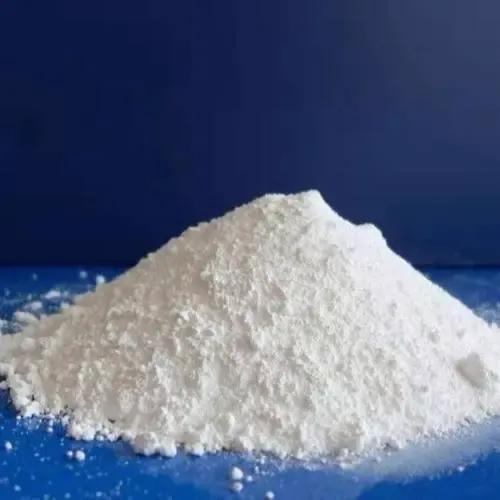
7 月 . 31, 2024 20:33 Back to list
Exploring the Top Manufacturers and Suppliers of Chemical Compound 13463-67-7 in the Industry
Understanding 13463-67-7 A Comprehensive Overview of Its Factories and Applications
In the world of industrial chemistry, certain compounds play a crucial role in various applications, spanning from manufacturing to pharmaceuticals. One such compound is the chemical with the CAS number 13463-67-7, commonly known as titanium dioxide (TiO2). This white pigment has become ubiquitous in many industries. This article aims to explore the factories producing this important chemical, its applications, and its significance in today's economy.
The Nature of Titanium Dioxide
Titanium dioxide is a naturally occurring mineral that exhibits outstanding brightness and opacity, making it one of the most widely used white pigments. It is recognized for its ability to scatter light and provide strong coverage, which is essential in applications such as paint, coatings, plastics, inks, and cosmetics. Beyond aesthetics, titanium dioxide also possesses photocatalytic properties, which can be utilized in environmental applications such as air purification and self-cleaning surfaces.
Factories Producing Titanium Dioxide
The production of titanium dioxide takes place in various specialized factories around the world. These facilities utilize two primary processes the sulfate process and the chloride process.
1. Sulfate Process This method involves the reaction of titanium ore (usually ilmenite) with sulfuric acid. The end product is a hydrated titanium dioxide, which is then transformed into the pigment after a series of filtering, washing, and calcination steps. Factories implementing this method are often equipped with significant chemical handling and waste management systems to ensure environmental compliance.
2. Chloride Process A more advanced method, the chloride process uses titanium tetrachloride as an intermediate. This compound is derived from titanium ores, processed under high temperatures with chlorine. The output of this process is a purer grade of titanium dioxide, which is often used for high-performance applications. Factories utilizing this method are generally more efficient and have a lower environmental impact due to fewer byproducts.
Notably, leading producers such as DuPont, Huntsman, and Tronox operate large-scale factories globally, taking advantage of economies of scale to drive down costs and enhance product quality.
13463-67-7 factories

Applications of Titanium Dioxide
The versatility of titanium dioxide translates into a multitude of applications across different sectors
- Paint and Coatings The construction and automotive industries rely heavily on titanium dioxide for its outstanding coverage, durability, and resistance to weathering.
- Plastics and Composites TiO2 is added to plastics to enhance their whiteness and provide opacity, improving the aesthetic appeal of products ranging from packaging to consumer goods.
- Cosmetics and Personal Care Due to its non-toxic nature, titanium dioxide is a popular ingredient in sunscreens. Its ability to block UV radiation makes it an essential component in skincare formulations.
- Pharmaceuticals and Food Additives In smaller quantities, titanium dioxide can be found in medicines and food products, acting as a coloring agent.
Conclusion
The factories producing titanium dioxide are pivotal in meeting the demands of numerous industries that value its unique properties. As environmental concerns continue to influence production practices, manufacturers are increasingly focusing on sustainable methods, aiming to minimize waste and reduce emissions. The ongoing innovations in titanium dioxide production and its applications will likely shape the future of numerous markets, underscoring the compound's significance in both global industry and everyday life. As we move forward, the role of titanium dioxide will likely expand, solidifying its status as a cornerstone in modern manufacturing and technology.
-
Lithopone for Plastic & TiO2 R-5568/SK-6658 Masterbatch Solutions
NewsMay.30,2025
-
China Leading Rutile TiO2 Manufacturer - R5566 & R996 Grades Available
NewsMay.30,2025
-
High-Purity Anatase & Rutile TiO2 Powder Trusted Manufacturer
NewsMay.30,2025
-
High-Purity Anatase Products Trusted Supplier & Manufacturer
NewsMay.29,2025
-
Best Price Eco-Friendly Rutile TiO2 Supplier & Wholesale Factory
NewsMay.29,2025
-
Chinese Anatase Titanium Dioxide for Ceramic Glaze Reliable Supplier
NewsMay.29,2025
